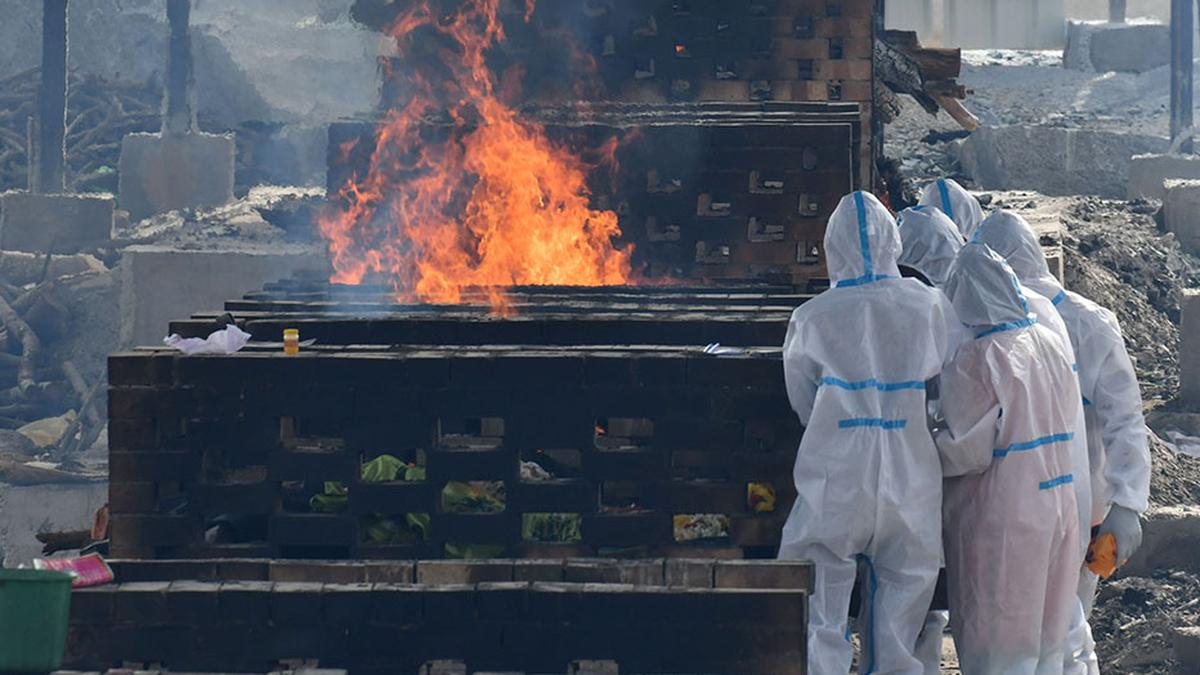Science
India’s Excess COVID-19 Deaths May Far Exceed Official Figures

Data from the Civil Registration System (CRS) has highlighted a significant rise in excess mortality in India during the COVID-19 pandemic. Excess mortality refers to the number of deaths beyond what would typically be expected in a given time period. The CRS reported that India recorded 76.4 lakh deaths in 2019, which increased to 81.11 lakh in 2020 and surged to 1.02 crore in 2021. This stark increase suggests that the actual impact of COVID-19 on mortality in India is considerably higher than the official count of 5.33 lakh deaths.
The CRS data, along with findings from the Medical Certification of Cause of Death (MCCD) for 2021, provides further evidence of this discrepancy. According to the MCCD, COVID-19 was the second leading cause of death, with 5.74 lakh fatalities attributed to the virus. Notably, this figure was based on just 23.4% of registered deaths in that year, indicating that the true toll could be much higher. The World Health Organization (WHO) previously estimated India’s total COVID-related deaths to be around 47 lakh, a figure the Indian government has contested, citing concerns about the methodology used.
Challenges in Mortality Data Collection
The limitations of the CRS data and the overall underreporting of COVID-related deaths illustrate a systemic deficiency in India’s mortality recording practices. The National Family Health Survey-5 revealed that nearly 29% of deaths between 2016 and 2020 went unregistered. The exclusion of civil registration from essential services during the lockdown in 2020 further complicated the situation, hindering accurate mortality tracking.
During a field study in Kerala, researchers observed a noticeable increase in cremation rates compared to previous years. This increase was evident not only in designated COVID-19 facilities but also in other crematoria, raising questions about the classification of deaths related to the virus. The lack of medical certification is a significant issue, as 45% of deaths in 2020 occurred without any medical attention, which is 10% higher than pre-pandemic figures. Nationally, only 23.4% of deaths were medically certified according to the MCCD data.
This lack of proper documentation affects both mortality surveillance and public health planning, making it difficult to ascertain the true impact of the pandemic.
Indirect Deaths and Broader Implications
Another critical aspect of the mortality burden during the pandemic involves indirect deaths. These are fatalities not directly caused by the virus but resulting from the broader consequences of the pandemic. Factors contributing to these indirect deaths include delays in care due to fear of infection, shortages of hospital resources, economic distress, and logistical barriers to healthcare access during lockdowns.
The field study in Kerala revealed that approximately 34% of deaths could be indirectly linked to the pandemic, with 9% potentially misclassified. If these trends are observed in a state with a relatively robust public health system, the undercounting could be significantly worse in other states with weaker healthcare infrastructure.
The findings underscore the pressing need for a comprehensive inquiry into the full extent of mortality during the pandemic. Policymakers are urged to conduct large-scale studies, potentially integrating questions about deaths into the upcoming Census. This would not only enhance the understanding of the pandemic’s impact but also emphasize the urgent need for reform in India’s mortality surveillance system.
The research conducted by Shilka Abraham, a Master of Public Health graduate at the Tata Institute of Social Sciences, and Soumitra Ghosh, Associate Professor and Chairperson at the same institution, calls for immediate attention to these issues. As the data continues to evolve, the need for accurate and comprehensive mortality tracking remains critical for future public health policy and planning in India.
-

 World5 months ago
World5 months agoSBI Announces QIP Floor Price at ₹811.05 Per Share
-

 Lifestyle5 months ago
Lifestyle5 months agoCept Unveils ₹3.1 Crore Urban Mobility Plan for Sustainable Growth
-

 Science4 months ago
Science4 months agoNew Blood Group Discovered in South Indian Woman at Rotary Centre
-

 World5 months ago
World5 months agoTorrential Rains Cause Flash Flooding in New York and New Jersey
-

 Top Stories5 months ago
Top Stories5 months agoKonkani Cultural Organisation to Host Pearl Jubilee in Abu Dhabi
-

 Sports4 months ago
Sports4 months agoBroad Advocates for Bowling Change Ahead of Final Test Against India
-

 Science5 months ago
Science5 months agoNothing Headphone 1 Review: A Bold Contender in Audio Design
-

 Top Stories5 months ago
Top Stories5 months agoAir India Crash Investigation Highlights Boeing Fuel Switch Concerns
-

 Business5 months ago
Business5 months agoIndian Stock Market Rebounds: Sensex and Nifty Rise After Four-Day Decline
-

 Sports4 months ago
Sports4 months agoCristian Totti Retires at 19: Pressure of Fame Takes Toll
-

 Politics5 months ago
Politics5 months agoAbandoned Doberman Finds New Home After Journey to Prague
-

 Top Stories5 months ago
Top Stories5 months agoPatna Bank Manager Abhishek Varun Found Dead in Well









